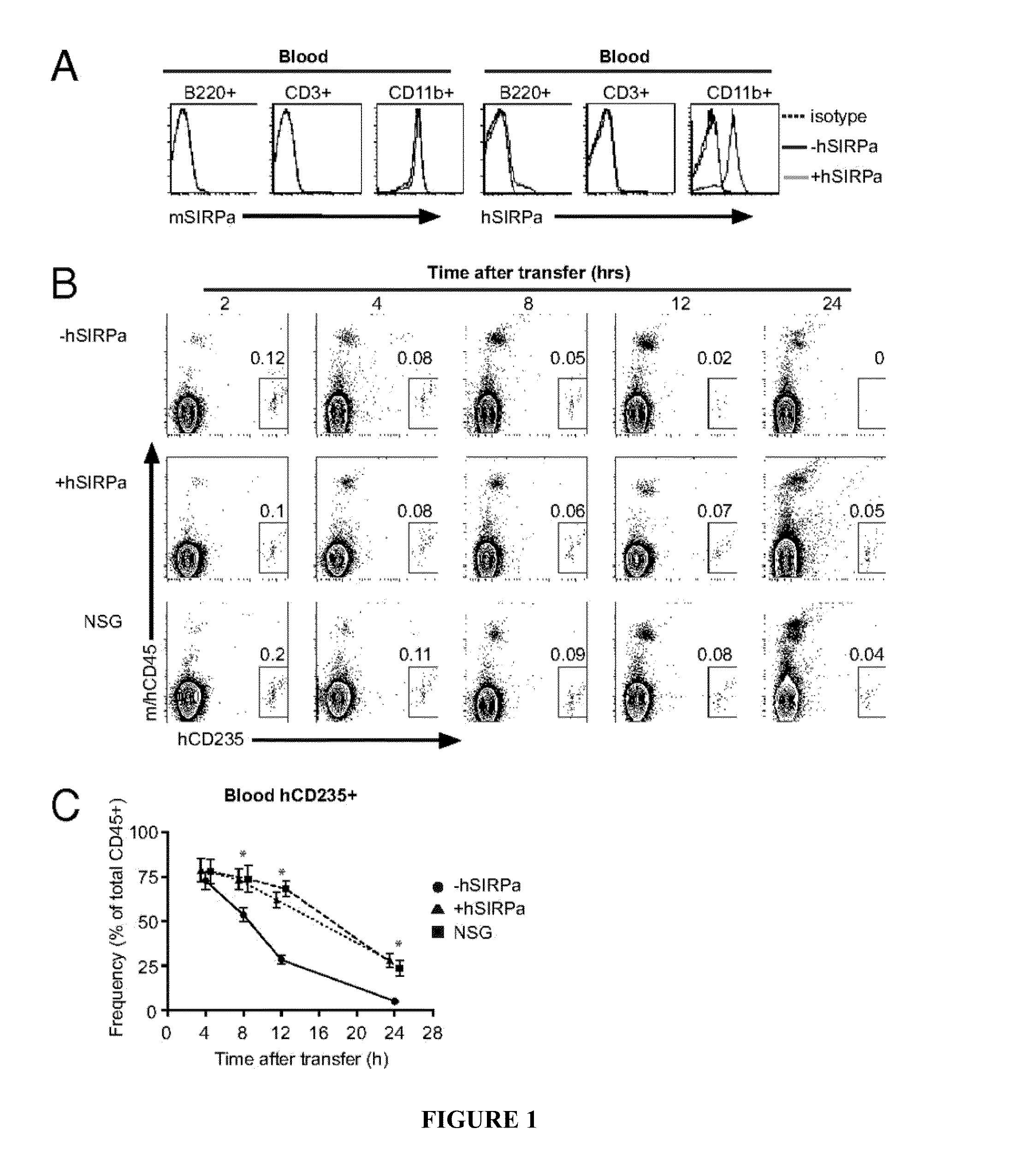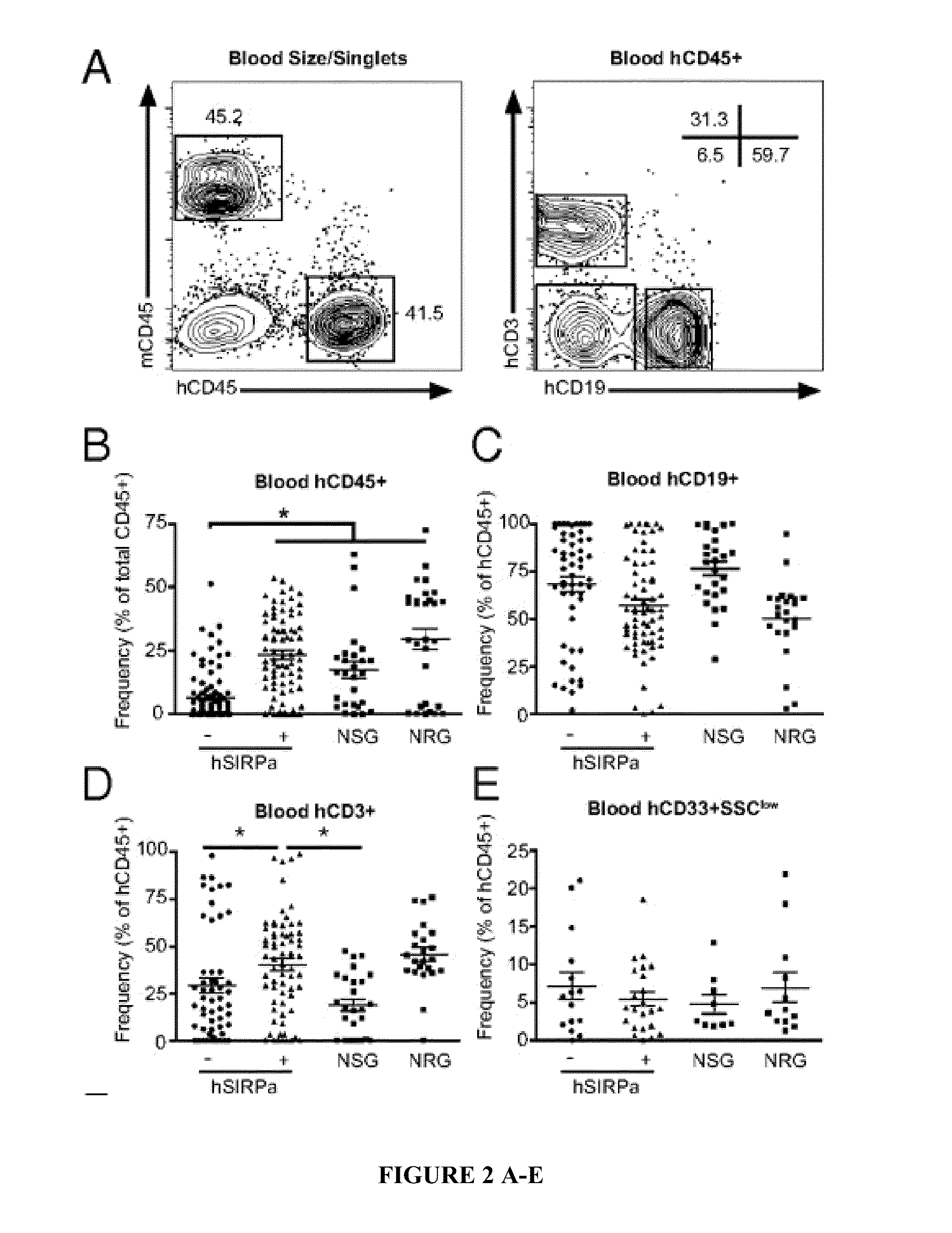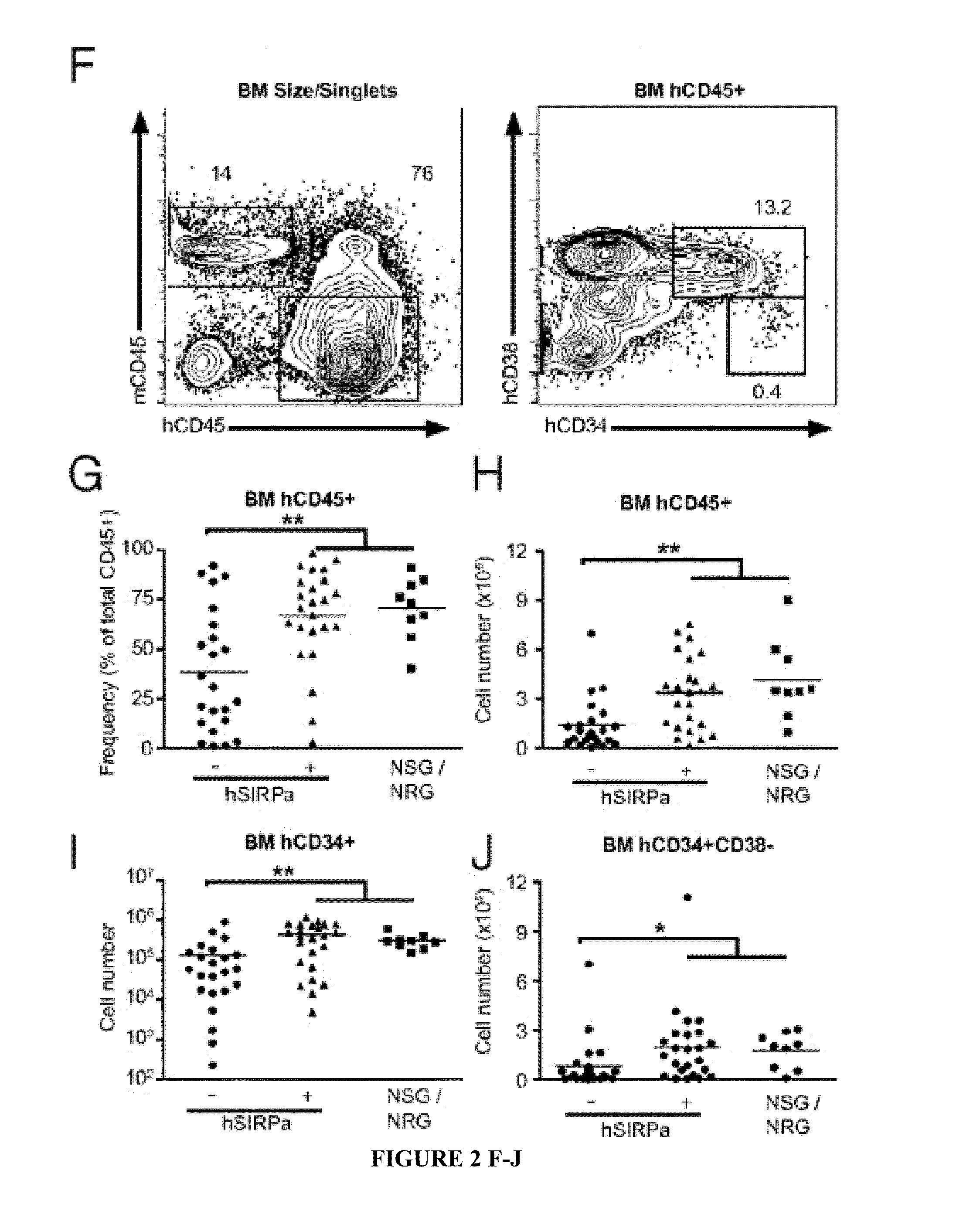Human SIRPAalpha Transgenic Animals and Their Methods of Use
a technology of human sirpaalpha and transgenic animals, which is applied in the field of human sirpaalpha transgenic animals and their methods of use, can solve the problems that overexpression of cytokines might also have detrimental side effects
- Summary
- Abstract
- Description
- Claims
- Application Information
AI Technical Summary
Benefits of technology
Problems solved by technology
Method used
Image
Examples
experimental examples
[0096]The invention is further described in detail by reference to the following experimental examples. These examples are provided for purposes of illustration only, and are not intended to be limiting unless otherwise specified. Thus, the invention should in no way be construed as being limited to the following examples, but rather, should be construed to encompass any and all variations which become evident as a result of the teaching provided herein.
[0097]Without further description, it is believed that one of ordinary skill in the art can, using the preceding description and the following illustrative examples, make and utilize the compounds of the present invention and practice the claimed methods. The following working examples therefore, specifically point out the preferred embodiments of the present invention, and are not to be construed as limiting in any way the remainder of the disclosure.
[0098]The materials and methods employed in these experiments are now described.
Mat...
example 1
hSIRPα is Faithfully Expressed and Functional in hSIRPα-Transgenic Mice
[0113]A bacterial artificial chromosome encompassing the coding region of huSIRPα was identified and engineered to contain a eukaryotic selection marker to allow transgenesis in ES cells. hSIRPα-transgenic Rag2− / −γc− / − (hSIRPα-DKO) mice expressing the human transgene under the human regulatory elements were generated after targeting an ES cell line (F1 129 / BALB / c Rag2+ / −γcy / −), which can easily be genetically manipulated (2011, Rongvaux et al., Proc Natl Acad Sci USA 95:5320-25; 2011, Proc Natl Acad Sci USA 108:2390-95). Upon obtaining several lines of hSIRPα-expressing mice, the expression levels of hSIRPα were analyzed on mouse CD45+ cells by flow cytometry. hSIRPα was faithfully expressed in BAC-transgenic mice as cells expressing mouse SIRPα expressed also hSIRPα (FIG. 1A and FIG. 5A). In contrast, no hSIRPα expression was detected on cells not expressing mouse SIRPα. hSIRPα-DKO mice had similar numbers of le...
example 2
Multilineage Engraftment in the Blood of hSIRPα-DKO Mice
[0114]To test whether hSIRPα expression in immunocompromised mice would lead to increased engraftment levels after human CD34+ cell transplantation, human fetal liver-derived CD34+ cells, a population highly enriched in HSPCs, were transplanted into newborn irradiated DKO, hSIRPα-DKO, and NSG mice. A total of 88% of engrafted hSIRPα-DKO mice had greater than 1% human CD45+ cells in the peripheral blood, which is similar to NSG mice, whereas only 52% of DKO surpassed this value (Table 1).
TABLE 1Engraftment of different strains of immunodeficient miceEngraftmentEngrafted at birthAlive after 3 mo>1% engrafted (%)DKO165135 70 (52)hSIRP155124109 (88)NSG7551 41 (80)I test†—0.0455*†*Tests difference of fraction of mice alive after 3 mo from total number of engrafted mice between the strains.†Tests difference of fraction of mice with engraftment levels higher than 1% from mice alive after 3 mo between the strains.
Compared with DKO mice...
PUM
| Property | Measurement | Unit |
|---|---|---|
| Length | aaaaa | aaaaa |
| Composition | aaaaa | aaaaa |
Abstract
Description
Claims
Application Information
 Login to View More
Login to View More - R&D
- Intellectual Property
- Life Sciences
- Materials
- Tech Scout
- Unparalleled Data Quality
- Higher Quality Content
- 60% Fewer Hallucinations
Browse by: Latest US Patents, China's latest patents, Technical Efficacy Thesaurus, Application Domain, Technology Topic, Popular Technical Reports.
© 2025 PatSnap. All rights reserved.Legal|Privacy policy|Modern Slavery Act Transparency Statement|Sitemap|About US| Contact US: help@patsnap.com



